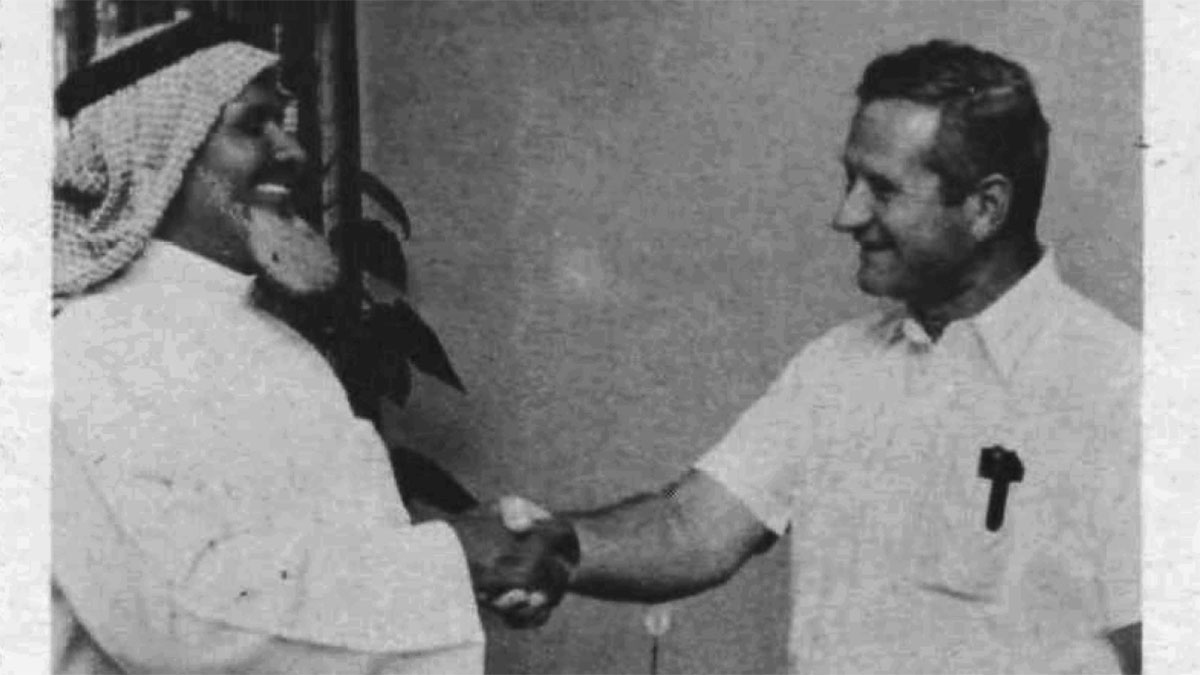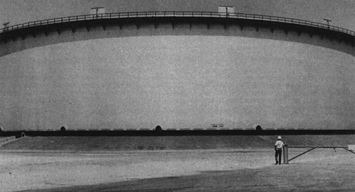This Day in History
This Day in History (1979): Defensive Driving Key to Accident Prevention

Global June 06, 2023
To combat rising accident rates, company turns to a way of driving that better protects all.
From the June 6, 1979, edition of The Arabian Sun
The rate of Aramco motor vehicle accidents is at its highest level in 20 years -- a matter of concern to Aramco executive management. The following article shows why most accidents happen, and how one group of Aramco divers has managed to keep vehicle accidents under control.
It was a bright clear day. The road north of Ju'aymah was straight, level, and surprisingly free of traffic. Nothing that the oncoming lane was clear, the driver of the Aramco vehicle pulled out to pass the lumbering dump truck ahead of him.
Suddenly, with no indication whatsoever, the truck turned left — straight into the Aramco vehicle.
A typical Aramco accident? In many ways it was. According to Fred Sigmon of the Loss Prevention Department, most Aramco motor vehicle accidents occur on clear days, dry pavement, and on straight roads.
While many are the result of actions on the part of the other driver, most could have been prevented by the Aramco driver by driving defensively.
"A preventable accident is one in which the driver could have taken some action to have prevented the accident from occurring. In this case, he should have made his presence known to the truck ahead of him before attempting to pass," said Sigmon, explaining that at least 60 percent of all Aramco accidents are preventable — a statistic that for 1978 amounted to 493 of the 821 accidents in which Aramco vehicles were involved.
"There were 7.2 accidents for every 1 million kilometers driven. This is the highest rate in 20 years," said Sigmon.
The safety record of Aramco's professional drivers such as Ghazi al-Gahtani of the Land Transportation Department shows that the accident rate could be lowered.
Like many of Aramco's professional drivers, he has never had an accident in a driving career that spans 28 years of driving every type of Aramco equipment — from sedans to the big new Kenworth 953A tractors; in all parts of Saudi Arabia, from Taif to Tabuk to Qasim in the north and in untold number of convoys to the deepest regions of the 'Rub al-Khali.
What is the difference between the way al-Gahtani drives and the way the average Aramcon drives?
According to the safety experts, Aramco drivers do not always adhere to the basic principle of defensive driving which, said Sigmon," is driving to avoid accidents in spite of the actions of other drivers and adverse road and weather conditions.
Caption for top photo: Aramco president Hugh H. Goerner congratulates professional driver Ghazi al-Gahtani of Land Transportation for his 28-year accident-free driving career.
Also on this date
2015 — Vincent Bugliosi, American layer and author of "Helter Skelter" relating to the Tate-LaBianca murders case, dies at age 80 of cancer in Los Angeles
2002 — A near-Earth asteroid estimated at 10 meters in diameter explodes over the Mediterranean Sea between Greece and Libya with a force estimated at slightly more powerful than the Nagasaki atomic bomb
1993 — Punsalmaaglin Ochribat wins the first presidential election in Mongolia
1985 — The grave of "Wolfgang Gerhard" is opened in Embu, Brazil; the exhumed remains are later proven to be those of Josef Mengele, Auschwitz's "Angel of Death." Mengele is believed to have drowned while swimming in 1979.
1971 — Cosmonauts Georgy Dobrovolosky, Viadislave Volkov, and Viktor Patsayev are launched aboard "Soyuz 11." They will die the following month while trying to re-enter Earth's atmosphere.
1956 — Professional tennis player Bjorn Borg is born in Stockholm, Sweden
1944 — The Allies launch the largest seaborne invasion in human history, with nearly 160,000 Allied troops crossing the English Channel and landing on the beaches of Normandy
1933 — The first drive-in theater opens in Camden, New Jersey
1912 — Novarupta erupts in Alaska, the largest volcanic eruption of the 20th century
1892 — The Chicago "L" elevated rail system begins operation
1859 — Queensland is established as a separate colony from New South Wales
1822 — Alexis St. martin is accidentally shot in the stomach, leading to William Beaumont's studies on digestion






